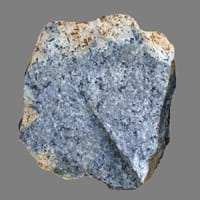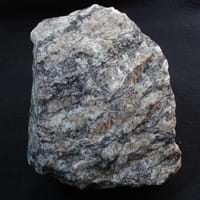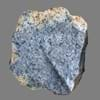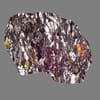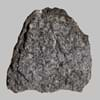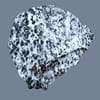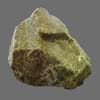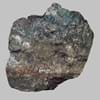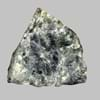Syenite and Gneiss
Definition
Definition
Syenite is a coarse-grained igneous rock which is composed mainly of alkali feldspar and various ferromagnesian minerals
Gneiss is a common and widely distributed type of rock formed by high-grade regional metamorphic processes from pre-existing formations that were originally either igneous or sedimentary rocks
History
Discoverer
Unknown
Unknown
Etymology
From French syénite, from Latin Syenites (lapis ) (stone) of Syene
From the Middle High German verb gneist (to spark; so called because the rock glitters)
Class
Igneous Rocks
Metamorphic Rocks
Sub-Class
Durable Rock, Medium Hardness Rock
Durable Rock, Hard Rock
Family
Group
Plutonic
Not Applicable
Other Categories
Coarse Grained Rock, Fine Grained Rock, Medium Grained Rock, Opaque Rock
Coarse Grained Rock, Medium Grained Rock, Opaque Rock
Texture
Texture
Earthy
Banded, Foliated, Platy
Color
Brown, Buff, Cream, Green, Grey, Pink, White
Black, Brown, Pink, Red, White
Maintenance
Less
More
Durability
Durable
Durable
Water Resistant
Yes
Yes
Scratch Resistant
Yes
Yes
Stain Resistant
No
Yes
Wind Resistant
Yes
Yes
Acid Resistant
Yes
No
Appearance
Banded and Foilated
Foliated
Uses
Architecture
Interior Uses
Flooring, Homes, Hotels, Interior Decoration
Countertops, Decorative Aggregates, Flooring, Interior Decoration
Exterior Uses
As Building Stone, As Facing Stone, Paving Stone, Garden Decoration, Office Buildings
As Building Stone, As Facing Stone, Garden Decoration, Paving Stone
Other Architectural Uses
Curbing
Curbing
Industry
Construction Industry
As Dimension Stone, Cement Manufacture, Construction Aggregate, for Road Aggregate, Landscaping, Making natural cement, Manufacture of Magnesium and Dolomite Refractories
As Dimension Stone
Medical Industry
Not Yet Used
Not Yet Used
Antiquity Uses
Artifacts, Monuments, Sculpture, Small Figurines
Artifacts
Other Uses
Commercial Uses
Cemetery Markers, Creating Artwork
Cemetery Markers, Jewelry, Tombstones, Used in aquariums
Types
Types
Shonkinite
Augen Gneiss, Henderson Gneiss, Lewisian Gneiss, Archean and Proterozoic Gneiss.
Features
Available in Lots of Colors and Patterns, Is one of the oldest rock, Matrix variable
Generally rough to touch, Is one of the oldest rock
Archaeological Significance
Monuments
Used
Used
Famous Monuments
Data Not Available
Konark Sun Temple in India, Washington Monument, US
Sculpture
Used
Not Yet Used
Famous Sculptures
Data Not Available
Not Applicable
Pictographs
Used
Not Used
Petroglyphs
Used
Not Used
Figurines
Used
Not Yet Used
Fossils
Absent
Absent
Formation
Formation
Syenites are formed due to alkaline igneous activities and are generally formed in thick continental crustal areas or in Cordilleran subduction zones.
Gneiss is a high grade metamorphic rock i.e. it has been subjected to higher temperatures and pressures than schist. It is formed by the metamorphosis of Gneiss forms from volcanic rock, shale or granitie.
Composition
Mineral Content
Amphibole, Biotite, Feldspar, Hornblade, Micas, Muscovite or Illite, Plagioclase, Pyroxene, Quartz
Biotite, Chlorite, Feldspar, Garnet, Graphite, Hornblade, Micas, Muscovite or Illite, Quartz, Quartzite, Silica, Zircon
Compound Content
Aluminium Oxide, CaO, Iron(III) Oxide, FeO, Potassium Oxide, MgO, MnO, Sodium Oxide, Phosphorus Pentoxide, Silicon Dioxide, Titanium Dioxide
Aluminium Oxide, NaCl, CaO, Iron(III) Oxide, FeO, Potassium Oxide, Magnesium Carbonate, MgO, MnO, Phosphorus Pentoxide, Silicon Dioxide, Titanium Dioxide
Transformation
Metamorphism
Yes
Yes
Types of Metamorphism
Burial Metamorphism, Cataclastic Metamorphism, Contact Metamorphism, Hydrothermal Metamorphism, Impact Metamorphism, Regional Metamorphism
Impact Metamorphism
Weathering
Yes
Yes
Types of Weathering
Biological Weathering, Chemical Weathering, Mechanical Weathering
Biological Weathering, Mechanical Weathering
Erosion
Yes
Yes
Types of Erosion
Chemical Erosion, Coastal Erosion, Glacier Erosion, Sea Erosion, Water Erosion, Wind Erosion
Chemical Erosion, Coastal Erosion, Sea Erosion
Properties
Physical Properties
Hardness
5.5-6
7
Grain Size
Medium to Fine Coarse Grained
Medium to Coarse Grained
Fracture
Not Available
Irregular
Streak
White
White
Porosity
Less Porous
Very Less Porous
Luster
Subvitreous to Dull
Dull
Compressive Strength
150.00 N/mm2
14
125.00 N/mm2
17
Cleavage
Perfect
Poor
Toughness
Not Available
1.2
Specific Gravity
2.6-2.7
2.5-2.7
Transparency
Opaque
Translucent to Opaque
Density
2.6-2.8 g/cm3
2.6-2.9 g/cm3
Thermal Properties
Specific Heat Capacity
0.92 kJ/Kg K
10
Not Available
Resistance
Heat Resistant, Impact Resistant, Wear Resistant
Heat Resistant, Pressure Resistant, Scratch Resistant, Wear Resistant
Reserves
Deposits in Eastern Continents
Asia
China, India, Iran, Saudi Arabia, Sri Lanka, Taiwan, Thailand, Turkey, Vietnam
China, India, Iran, Iraq, Kazakhstan, Kyrgyzstan, Mongolia, Russia
Africa
Angola, Egypt, Madagascar, Namibia, Nigeria, South Africa
Cameroon, Ethiopia, Ghana, Kenya, Madagascar, Morocco, Mozambique, Namibia, Nigeria, Tanzania, Togo
Europe
Bulgaria, England, Germany, Norway, Romania, Switzerland
Albania, Austria, Bosnia and Herzegovina, Finland, France, Georgia, Germany, Hungary, Italy, Kosovo, Monaco, Norway, Poland, Romania, Serbia, Slovakia, Slovenia, Switzerland, Ukraine, United Kingdom
Others
Not Yet Found
Not Yet Found
Deposits in Western Continents
North America
USA
Canada, Costa Rica, Cuba, Mexico, Panama, USA
South America
Brazil, Chile
Argentina, Bolivia, Brazil, Chile, Colombia, Ecuador, Peru, Venezuela
Deposits in Oceania Continent
Australia
New Zealand, Queensland, South Australia, Western Australia
New South Wales, New Zealand, Queensland, Victoria
All about Syenite and Gneiss Properties
Know all about Syenite and Gneiss properties here. All properties of rocks are important as they define the type of rock and its application. Syenite belongs to Igneous Rocks while Gneiss belongs to Metamorphic Rocks.Texture of Syenite is Earthy whereas that of Gneiss is Banded, Foliated, Platy. Syenite appears Banded and Foilated and Gneiss appears Foliated. The luster of Syenite is subvitreous to dull while that of Gneiss is dull. Syenite is available in brown, buff, cream, green, grey, pink, white colors whereas Gneiss is available in black, brown, pink, red, white colors. The commercial uses of Syenite are cemetery markers, creating artwork and that of Gneiss are cemetery markers, jewelry, tombstones, used in aquariums.
|
||
|
||
|
